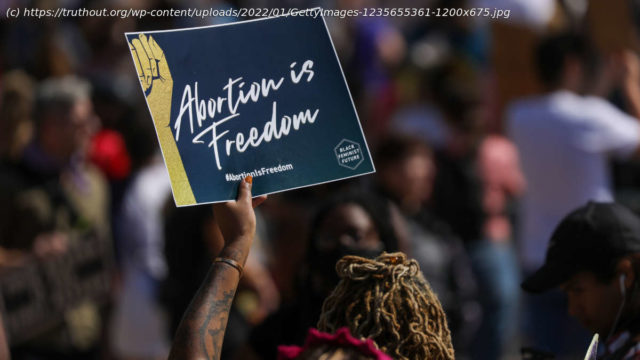Even if every person who needed it could obtain contraception, it wouldn’t completely eliminate the need for abortion.
A historic ruling on abortion is likely to emerge from the U.S. Supreme Court this year as justices consider whether Mississippi can, in fact, impose a ban on abortions after 15 weeks of pregnancy. The case, Dobbs v. Jackson Women’s Health Organization, challenges the landmark 1973 Roe v. Wade decision that protects women’s right to abortion. Meanwhile, Texas enacted its own restrictive abortion law in September – and other states are working to follow suit. Mississippi Solicitor General Scott G. Stewart argued before the Supreme Court in December that abortion is not necessary. “I would emphasize that contraception is more accessible and affordable and available than it was at the time of Roe or Casey,” Stewart said, in reference to Roe v. Wade and Planned Parenthood v. Casey, two landmark abortion court decisions. “It serves the same goal of allowing women to decide if, when and how many children to have.” So, is it actually easier than ever to get contraception in the U.S. – and does that mean that abortion is no longer necessary? The short answers are, “no” and “no.” Even if every person who needed it could obtain contraception, it wouldn’t completely eliminate the need for abortion. Total protection from unwanted pregnancy is impossible to achieve, even with multiple, highly effective modern methods of contraception available. No contraceptive method is 100% effective, and a need for abortion will always exist for several reasons. First, most contraceptive methods still require a prescription and at least an initial visit to a clinic or a doctor’s office to initiate or maintain treatment. This step alone can be prohibitive for the 21 million American women who cannot afford to pay for family planning services. This figure marks a 25% increase over the past two decades – in 2000,16.4 million American women and girls needed help paying for contraception. This increase is outpacing the growth of the total number of sexually active women and teens who need contraception since 2000. Second, not all health care providers are up to date on the latest evidence-based guidelines for contraceptive use in people with particular medical conditions. As a result, patients may be unnecessarily denied their chosen contraceptive method or asked to return for multiple visits. Third, many young people do not receive adequate sex education, which would include information about contraception and how to get it. This is especially true among low-income or marginalized populations, including people of color and nonnative English speakers.
Домой
United States
USA — Events Post-“Roe,” Birth Control Is More Accessible, But Abortion Is Still Crucial






